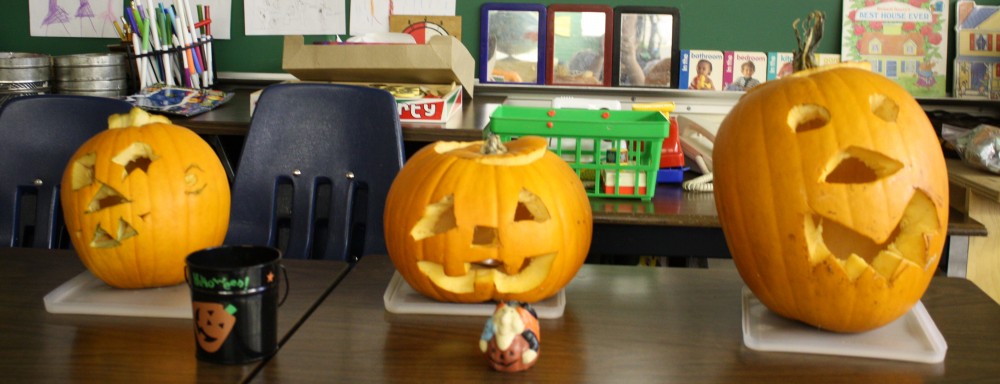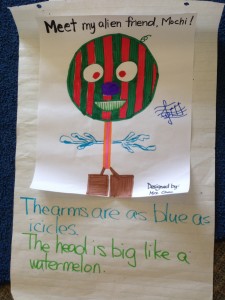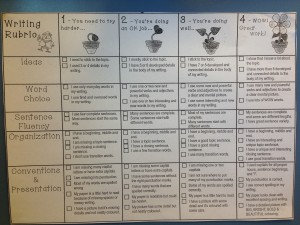In order to implement effective practices of planning, instructing, assessing, evaluating and reporting, I used a wide collection of teaching materials from my university coursework, practicum school and local libraries to create my units. One of the units that I made an extensive use of resources was the poetry unit on similes.
A) PLANNING & INSTRUCTING
In this Language Arts unit, students were invited to imagine, create and write a monster poetry. They worked through the processes as a writer from brainstorming ideas to structuring similes in a poetic form that brought enjoyment for reading.
In the beginning, I read to my students some interesting books that modeled the exemplary use of similes. Then, students were invited to explore similes through their five senses, which was based upon a previous Science unit that we did together. In small groups, I guided students on how to explore language through a variety of art materials to see, hear, feel, taste and smell them with descriptive similes. Here are some examples written by my students:
as crunchy as an apple
as sweet as cotton candy
as sharp as a sword
light like a feather
green like slime
hot like a fire
After some initial practices, students began to draw their aliens and use similes to describe their look and personality.
They were asked to shared in their small groups first and then in the whole class. Looking through students’ examples, I checked in with those who needed extra help. In the final stage, students put together a poem of similes and took the time to write their own drafts, find their mistakes and finish with a good copy. Here is an example of my student’s poem:
My Extraordinary Class Visitor by D.
Come and meet my alien friend, Rader!
His arms are as sharp as a pencil.
His feet are as loud as a thunder.
His head is as slippery as a soap.
His eyes feel as hot as a fire.
His nose smells like bart.
His teeth are as dirty as a puddle of mud.
His voice is as scary as an
earthquake.
Rader is happy as you and me.
What a pleasure for us to meet!
B) ASSESSING & EVALUATING
My school advisor and I used two types of assessment throughout the unit.
i) Assessment as learning: Students used a checklist to find mistakes in their work and edit their peers’ work. It was meaningful for them to make their own corrections.
Student Writing Checklist
ii) Assessment of learning: We used the class rubric and Ministry’s Performance Standards for writing to assess students’ writing. As I was reviewing students’ writing, I took the opportunity to reflect upon my own teaching and identify ways to support students who excelled way above and those who struggled to pass.
C) REPORTING
For the year-end reports, I was given the opportunity to grade and comment on students’ writing in Language Arts. It was remarkable for me to work through an array of writing samples from students, for example, their poems, thesis paragraphs, fairy tales, journals and book reports. With my school advisor, I was able to draw from a diverse pool of students’ writing and work out some solutions to make the writing process go more smoothly for them. From this collaboration, I became more aware on how to use a collection of assessment to communicate with students and support them on their journey, as opposed to giving them a grade only.
As an educator, I strive constantly to create a nurturing environment that fosters reading and writing in the classroom. By reading frequently to my students, I aim to inspire a love for reading and writing so that they would find them not only practical but enjoyable through a common experience of literature in the classroom. I also encourage my students to write often in their journals to express how they feel and think about their challenges and successes in writing or any other subjects that they like. Through effective teaching practices, I hope to bring forth enjoyable lessons to my students and enable them to grow from their unique learning experiences.


